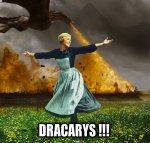dave2008
Legend
No... just no
Care to explain?
No... just no
The degree the individual is engulfed in flames is a representation of how many hit points are lost.
After that you can imagine however you want. I guess if you go the ongoing damage route then set it for so many rounds and then it is done. What I did not like about 4E ongoing damage was saving each round. Make the book keeping simple.
One thing I have contemplated doing was in addition to giving dragons "hot flames" to also give them the option of breathing cool flames as well.
https://en.wikipedia.org/wiki/Cool_flame
A dragon might do this in order to avoid damaging a warriors mastercraft armor so that it can then be added to it's hoard. Since cool flames are difficult to see it allows for a stealthier attack in dark conditions. The "knock" could be used as a stun attack.
Would have the breath weapon do half damage or less be fair in your opinions?

Interesting idea. After quickly skimming the link I would suggest a maximum of half damage, maybe less. I definitely wouldn't add the additional effects I describe in the OP
I've been slowly building up to a dragon battle in my current campaign. But I think rather than changing the attacks of the dragon, I'll adjust the terrain to make the dragon as fearsome as possible. Like you (the OP) I would like my dragon to create a terrifying raging inferno. So what I've been thinking about, is to have the battle take part on an underground petroleum lake. Every time the dragon uses its breathweapon, it literally sets the water on fire. It would give the players a difficult choice between land and water, because diving underwater is literally the best cover against the raging inferno that the dragon will unleash.
I may even implement my earlier suggestion and have the flames spread across the surface with each round. But since the lake will be a mix of water and petroleum, there would probably be a limit to how much of the water is set ablaze with each attack (not every spot on the lake is equally flammable). I may limit the spread to around 3 to 5 tiles to prevent the entire lake from burning up in an instant.
It's worth noting that most ovens operate around 350F, and anything over 150F is enough to cause burns on human flesh. It's difficult to understand just how hot 750F really is for most people since ya know, it's deadly. A brush fire runs about 370F and a forest fire can run up to 1400F.
Modeling fire in D&D off real-world fire in terms of what it burns is probably foolish. If dragonfire can ignite a tree, it probably burns at well over 800F. To not incinerate a human (regardless of his plate armor) instantly, a dragon is likely firing "cool fire" to begin with. If a dragon were shooting 1000F flames, there really shouldn't even be a reflex save, any human who isn't magically immune to fire would just die. And this is ignoring death by dehydration, death by suffocation, death by the water in your brain boiling (which happens around 250F). Assuming the dragon fires its breath weapon for the majority of its turn ~6 seconds this is, even with cool flames, like sticking your head in a 400F oven for 6 seconds. You'd probably be dead.
